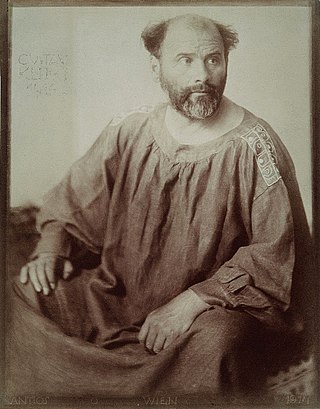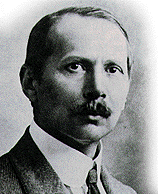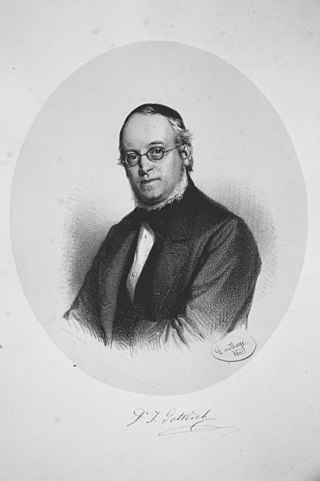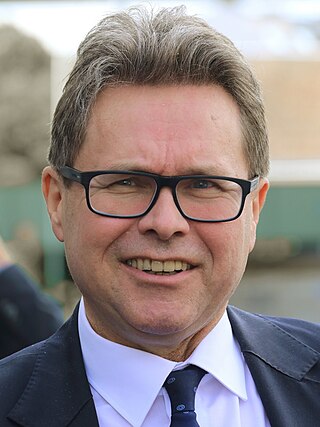
Gustav Klimt was an Austrian symbolist painter and one of the most prominent members of the Vienna Secession movement. Klimt is noted for his paintings, murals, sketches, and other objets d'art. Klimt's primary subject was the female body, and his works are marked by a frank eroticism. Amongst his figurative works, which include allegories and portraits, he painted landscapes. Among the artists of the Vienna Secession, Klimt was the most influenced by Japanese art and its methods.

Egon Leo Adolf Ludwig Schiele was an Austrian Expressionist painter. His work is noted for its intensity and its raw sexuality, and for the many self-portraits the artist produced, including nude self-portraits. The twisted body shapes and the expressive line that characterize Schiele's paintings and drawings mark the artist as an early exponent of Expressionism. Gustav Klimt, a figurative painter of the early 20th century, was a mentor to Schiele.

Technische Universität Berlin is a public research university located in Berlin, Germany. It was the first German university to adopt the name "Technische Universität".

The Technical University of Munich is a public research university in Munich, Bavaria, Germany. It specializes in engineering, technology, medicine, and applied and natural sciences.

Lviv Polytechnic National University is a public university in Lviv, Ukraine, founded in 1816. According to the Times Higher Education, as of 2024, it ranks first as a technical institution of higher education and second among all institutions of higher education after Sumy State University in Ukraine. Lviv Polytechnic is also the largest educational institution in Ukraine by the number of students and one of the largest by the number of faculties and departments.

Graz University of Technology is a public research university located in Styria, Austria. It was founded in 1811 by Archduke John of Austria and is the oldest science and technology research and educational institute in Austria. It currently comprises seven faculties and is a public university. It offers 19 bachelor's and 36 master's study programmes across all technology and natural sciences disciplines. Doctoral training is organised in 14 English-speaking doctoral schools. The university has more than 17,000 students, and around 1,900 students graduate every year. The Graz University of Technology and the University of Graz co-operate in teaching and research of natural sciences.

The Vienna University of Technology is a public research university in Vienna, Austria.

Viktor Kaplan was an Austrian engineer and the inventor of the Kaplan turbine.

Roland Rainer was an Austrian architect.

The Leavitt-Riedler Pumping Engine (1894) is a historic steam engine located in the former Chestnut Hill High Service Pumping Station, in Boston, Massachusetts. It has been declared a historic mechanical engineering landmark by the American Society of Mechanical Engineers. The pumping station was decommissioned in the 1970s, and turned into the Metropolitan Waterworks Museum in 2011.

Adolf Karl Heinrich Slaby was a German electronics pioneer and the first Professor of electro-technology at Technische Hochschule Charlottenburg.

Johann Gottlieb was an Austrian chemist who first synthesized Propionic acid. He is also known for describing and naming Paramylon.

Josef Alexander Kozeny was an Austrian hydraulic engineer and physicist. Today he is mainly remembered for the Kozeny–Carman equation which describes fluid flowing through a packed bed of solids.

The Lurgrotte karst cave is the largest cave in the Eastern Alps of Styria, Austria. It is located about 16 km (9.9 mi) north of Graz and crosses the Tannenben karst region. The cave has two accessible entrances, one at the village of Semriach and the other at the village of Peggau. At the Semriach entrance, the Lur River sinks into the cave. At the Peggau entrance, the Schmelz River emerges from within the cave, flowing to the west and eventually joining the Mur River.
Julius Magg was an Austrian engineer and university professor. In the early 20th century, he contributed significantly to the further development of the Diesel engine. Later, he was known as the founder of the Graz method of engine design.
Josef Herbert Ernst Fiala is an Austrian automotive engineer.

Hans-Georg Münzberg was a German engineer who specialized in airplane turbines and space flight. He taught at the TU Berlin, the TH Munich, and wrote textbooks.
Ferdinand Wittenbauer was an Austrian mechanical engineer and writer. He is known for introducing graphic methods in dynamics.
Jakob Pöschl was an Austrian physicist and university teacher.

Martin F. Polaschek is an Austrian legal scholar and legal historian who has served as Federal Minister for Education, Science and Research in the Nehammer government since 6 December 2021. An Independent, he was nominated by the Austrian People's Party (ÖVP).

















